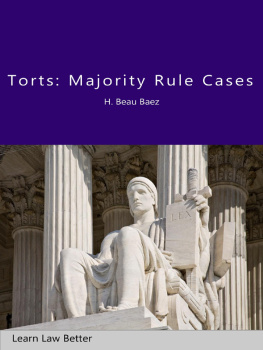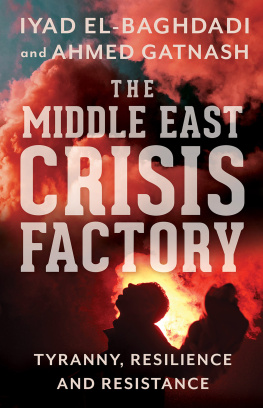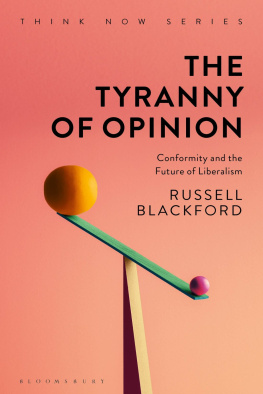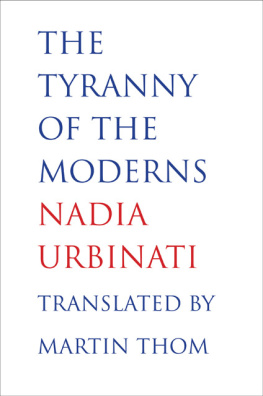Table of Contents
Pages
A fascinating study of the way leaders use and abuse the idea of majoritarianism to cement their rule. Unlike conventional accounts of majoritarianism, Nyirkos makes the intriguing argument that the theme of the tyranny of the majority can be found in the classic works of Plato, Aquinas, and other political theorists. In addition, Nyirkos provides us with a message that is suited to our times, cautioning us about the dangers of the majoritarian temptation in such putatively democratic movements as Occupy Wall Street and Anonymous. This is a commendably learned book.
A. James McAdams, William Scholl Professor of International Affairs,University of Notre Dame
This book offers an engaging journey of intellectual exploration into the history of political thought. Through this journey, Tams Nyirkos reminds us of the threats that monist interpretations of majority rule may generate against liberty and pluralism. This is an excellent guide to scholars and students of Political Theory, as well as to all readers who appreciate the idea of limited government regardless of whether government comes from one, or the few, or the many.
Joo Carlos Espada, Director, Institute for Political Studies, The Catholic University of Portugal, President,International Churchill Society of Portugal
Starting with Plato and working his way to the present, Nyirkos presents a thorough and nuanced history of an idea that both lives up to high scholarly standards and is extraordinarily relevant to everyday political life in postmodern societies. Nyirkos unveils the elusiveness of the majority will, showing the impossibility of determining the good numerically and the use of the will of the people as a rhetorical device by elites. The result is a brilliant and sobering look at what passes for democracy in both the past and the present.
William Cavanaugh, DePaul University
The Tyranny of the Majority
Tams Nyirkos provides a timely and essential reassessment of the concept of the tyranny of the majority for the study of democracy today. The analysis is divided into three parts: the first discusses the prehistory of majority tyranny; the second reviews the elements of the standard theory in the modern era; while the third deals with the current postmodern challenges to the prevailing order of liberal democracy.
Combining different elements of theories dating from the Middle Ages to the present, Nyirkos theorizes that while the term the tyranny of the majority may be misleading, the threat that tyrannical governments justify themselves by reference to the majority will remain with us for the foreseeable future. He shows how some of the greatest political philosophers of the past democrats and anti-democrats alike shared the same fears about the majoritarian principle.
The Tyranny of the Majority will offer all those who read it a better understanding of what is meant not only by this term, but also by related terms like democratic despotism, populism, or illiberal democracy. It will be of interest to scholars of politics and international relations, political philosophy, political theology, and intellectual history.
Tams Nyirkos is a Senior Lecturer in the Institute of International Studies and Political Science of Pzmny Pter Catholic University, Hungary. His research interests include democratic theory, politics and religion, and the origins of modern political philosophies. In 2014 and 2015 he taught classes on Tocqueville at the Catholic University of Portugal and the University of Lapland. He is a member of the Public Board of the Hungarian Academy of Sciences.
The Tyranny of the Majority
History, Concepts, and Challenges
Tams Nyirkos

First published 2018
by Routledge
711 Third Avenue, New York, NY 10017
and by Routledge
2 Park Square, Milton Park, Abingdon, Oxon, OX14 4RN
Routledge is an imprint of the Taylor & Francis Group, an informa business
2018 Taylor & Francis
The right of Tams Nyirkos to be identified as author of this work has been asserted by him in accordance with sections 77 and 78 of the Copyright, Designs and Patents Act 1988.
All rights reserved. No part of this book may be reprinted or reproduced or utilized in any form or by any electronic, mechanical, or other means, now known or hereafter invented, including photocopying and recording, or in any information storage or retrieval system, without permission in writing from the publishers.
Trademark notice: Product or corporate names may be trademarks or registered trademarks, and are used only for identification and explanation without intent to infringe.
Library of Congress Cataloging in Publication Data
A catalog record for this book has been requested
ISBN: 978-0-8153-8099-3 (hbk)
ISBN: 978-1-351-21142-0 (ebk)
Typeset in Times New Roman
by Wearset Ltd, Boldon, Tyne and Wear
Contents
Introduction
The 2010s seem to revive the old notion of the tyranny of the majority. In reflection to certain referenda and elections, a surprisingly large number of references are made to Platos or Tocquevilles prophecies of the tyrannical tendencies of democratic majorities, while some authors also begin to realize the complexity of the issue: when, for instance, elder and lower-educated voters outnumber the younger and more highly educated, in which context even the idea of plural voting (giving more than one vote to some members of the electorate, as it was suggested by John Stuart Mill) reemerges (Jacobs 2016). In some countries, it is a topic of interesting debates whether the majority of electors and states exercise tyranny in federal elections, or quite the opposite: the real tyranny would be if only the overall majority of voters were taken into account (Illing 2016; Kuhner 2016; Stepman 2016; Zeybekoglu 2016; etc.). The rhetoric of the peoples candidates against the candidates of the elite in election campaigns also raises exciting questions, especially when the elite nevertheless earns the votes of the majority (Guardian 2017), and so does the recurring attempt to replace or at least supplement elections and referenda with other means of direct democracy, like popular consultations or internet campaigns, in which more hostile observers will only see the return of tyranny in a popular disguise.
All this already shows how vague the concept of majority tyranny is, and this has been true throughout history. To be precise, the expression itself did not exist before John Adams, who first used it in his A Defence of the Constitutions of Government of the United States of America in 1788, while the fear that such a thing the majority acting as one tyrant might occur in democratic regimes has always been present: as a 2014 books title suggests, from the Greeks to Obama (Thornton 2014). The history of this fear, however, is still to be written. When speaking of the history of a fear, it is in order to avoid the impression that there is a perpetual ghost called the tyranny of the majority marching down the highway of history with an ever-immutable essence: all that is assumed by the present work is that the fear of the tyranny of the majority keeps resurfacing whenever some form of democracy makes a real or even just theoretical entrance to the political world. What remains to be asked is what the object of such a fear exactly is.










